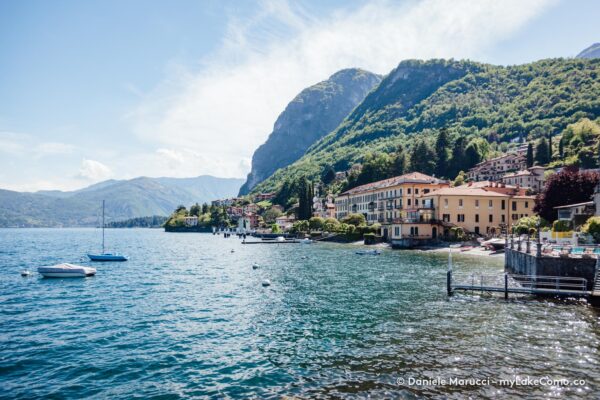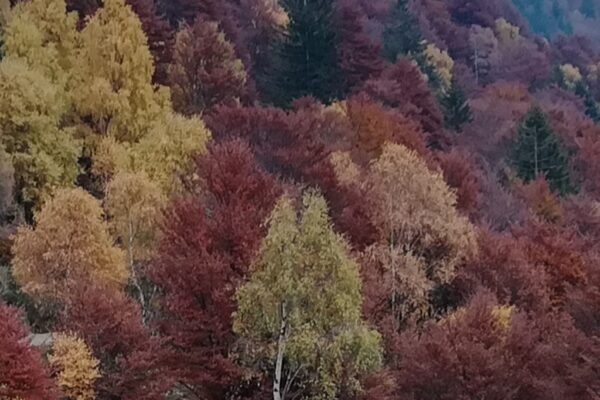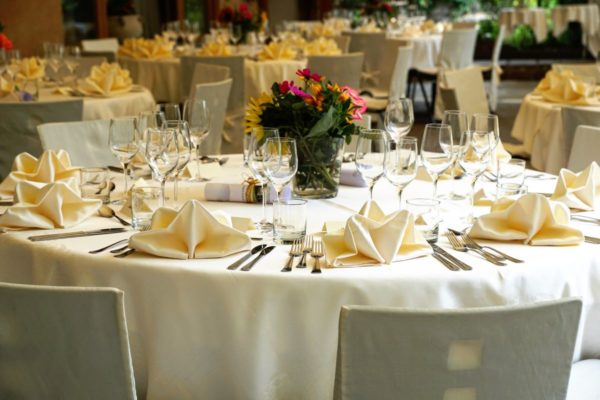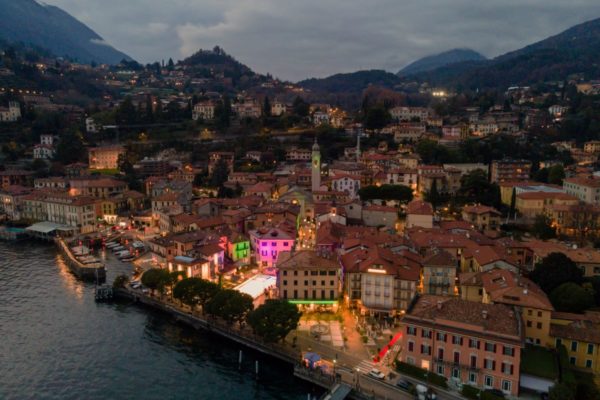Spring in Menaggio? Strolling along Menaggio’s lovely lake side promenade to observe the stunning panorama of the lake surrounded by its lovely snow covered mountaintops is a heartwarming experience. In the flowerbeds among the violets the tulips are starting to appear.
Menaggio is of ancient origins and in its centre there are many interesting monuments which you can discover by following an interesting itinerary. For children we offer an amusing quiz itinerary to follow together with the historical itinerary through the town.
Take a jump into history and follow, from Menaggio to Rezzonico, the Antica Strada Regina, an ancient connection road between the south and the north side of the Alps built during the late period of the Roman Empire, or ascend the Belvedere la Crocetta with its trenches of the First World War.
The circular walk of three hours from Menaggio to its three villages, Croce, Loveno and Nobiallo leads you to discover their historical and artistic aspects. You will follow the traces of the former railway, which from 1884 brought tourists from all over Europe to Lake Como, you will discover the remains of the Menaggio Castle destroyed in 1523, the sun kissed Loveno, from the end of the eighteenth century a prestigious residential area and finally you will visit Nobiallo, a typical fishing village stretched along the lake under the protective eye of the Sanctuary of the Madonna della Pace with its beautiful 17th century architecture.
By bike we recommend the cycle path that follows the traces of the former railway that ran, from 1884 till 1939, between Menaggio and Porlezza connecting Lake Como with Lake Lugano. The route runs through the Val Menaggio and touches the Lago di Piano Nature Reserve.
Thanks to its central location Menaggio is an excellent base for discovering Lake Como. Here are some itineraries.
A week to discover the lake
Monday: discover Argegno and Cernobbio

Take bus C10 to Argegno. Argegno is a small, picturesque town situated at the mouth of the Telo stream, at the beginning of the Intelvi Valley that connects Lake Como with Lake Lugano. The town is divided into two parts: the lake-side promenade and the historic centre. Along the first, there is a succession of cafés and restaurants where you can relax overlooking the lake. The second part is perched on a rocky spur and is characterized by narrow alleyways and stone houses. Around the public boat dock there is a small market on Monday morning. Between the two parts of the town lies the small central square “Piazza Roma” and an elegant small medieval bridge (XII century). From here, in about 40 minutes, you can walk up to the small 16th-century Church of St. Anna by following the track on the left side (south) of the Telo stream. At the end of the path, a short flight of steps leads to the grassy yard where the small Sanctuary stands, and from where you have a beautiful view of the lake. There is cable car from Argegno to Pigra. The cable car station is located at the northern end of the town. At the moment the cable car is closed.
From Argegno take bus C10 to Cernobbio. Cernobbio counts 6000 inhabitants, which makes it one of the bigger towns on the lake. Because of its favourable geographical position, it was chosen as an ideal location to build palaces and elegant villas such as Villa Pizzo and the famous Villa d’Este, one of the most elegant and famous hotels in the world. It was built at the end of the 15th century. From the boat dock of Cernobbio you walk along the shore where there is a succession of cafés and restaurants. You enter the historical centre between the church of S. Vincenzo of the 17th century, with its unique façade out of fired brick, and the medieval Piazza Castello. Then continue along Via XX September until you reach the fork with Piazza Bellinzaghi. Here stands the 16th century church of the Madonna delle Grazie. From here turn back to the centre of Cerbobbio along Via Regina. From Piazza Mazzini, in order to return to the dock, turn left. If you continue instead along Via Regina, at house n° 7 you find Villa Bernasconi, built in a liberty style, with beautiful decorations with forms of butterflies and silkworms in honour of the buyer, the industrialist Davide Bernasconi, owner of an important weaving mill. In front of this villa is the congress and trade centre Villa Erba, constructed in 1986 on design of Mario Bellini. The villa, with the characteristic tower, is of the early 19th century. Bus back to Menaggio.
Tuesday: Discover Lenno

You can reach the town Lenno by bus line C10. In the morning there is a nice market on the lake side. In the piazza XI Febbraio stand the parish church S Stefano with its interesting crypt and the splendid Romanesque Baptistery of S. Giovanni. Lenno lies around the beautiful bay called “Baia di Venere,” formed by the peninsula Lavedo where one of the most famous villas of the lake, the villa Balbianello stands. It was built in the late 1700s on order of Cardinal Durini. The villa, is open from 10.00 till 18.00; last entry to the gardens at 17.15 last guided visit of the inside of the villa at 16.30 (depending on the possible places).
From Lenno you can walk to the Santuario della Madonna del Soccorso (45 min one way) along the famous lane with the 14 chapels dedicated to the rosary, with life size statues out of terracotta of the 17th century, due to its artistic and historical importance it was declared Heritage of Humanity. Back by bus C10 or by boat to Menaggio.
Wednesday: Discover the Northern part of lake.
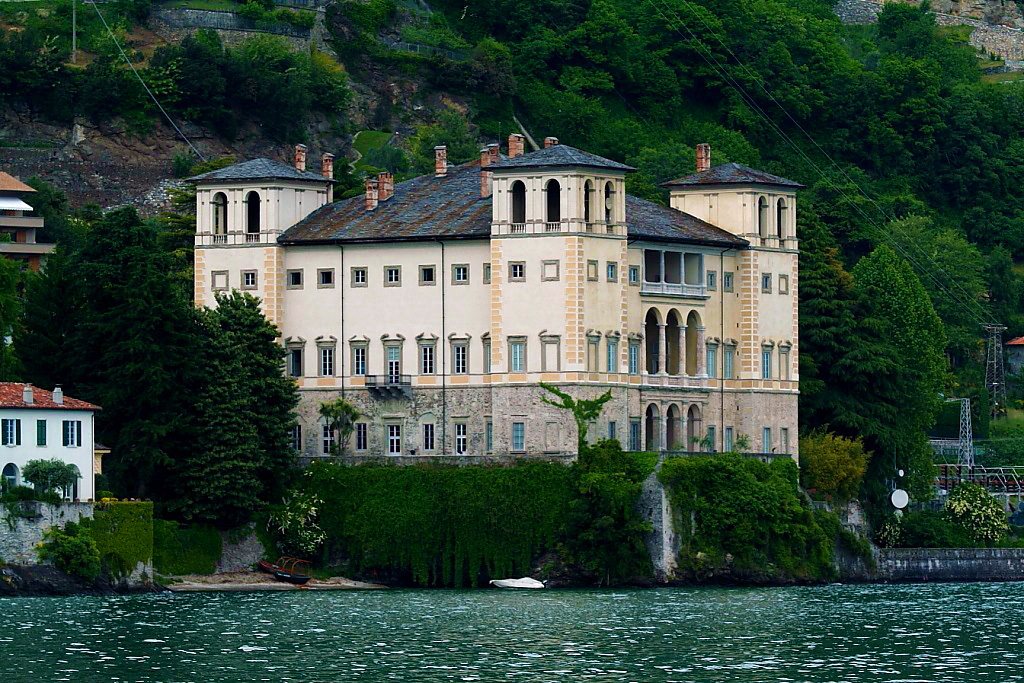
Catch the bus line C10 direction Colico from Menaggio from piazza Roma to Dongo. Get off the bus in Piazza Parracchini. On 27 April 1945 Mussolini and some of his ministers were brought here after being captured on the road between Musso and Dongo by the local partisans. These facts are remembered in the local museum in palazzo Manzi. dedicated to the end of the Second World War. The museum is open from the end of March from 10.00 to 12.30 and from 15.00 to 18.00. There are also two outdoor infomation panels at Dongo describing Mussolini’s arrest and the execution of the RSI leaders. From Palazzo Manzi, built in 1824, walk along via del Mercato to piazza Rubini in order to enter the historical centre where you find the Romanesque church of S. Maria in Martinico. From here along l’Antica Strada Regina you reach Barbignano, one of the oldest parts of Dongo. Turn back to Palazzo Manzi and along via Roma and via Tre Pievi walk to the Franciscan Monastary of the Madonna delle Lacrime of the 16th century. About 50 m further, along via Bellesini, you reach the parish church of S. Stefano. The church is of ancient origins but rebuilt in the 18th century and adorned with frescoes by artists of European fame such as Carlo Scotti and Giulio Quaglio.
Behind the church a lovely lake side walk (1 h ). connecting Dongo with Gravedona starts with beautiful views of the northern lake area. At Gravedona visit the beautiful Romanesque church S. Maria del Tiglio, one of the most important Romanesque buildings of the province. Walk to the centre and follow the indications for “castello” the oldest part of Gravedona. Every first and third Wednesday there is a market in Piazza Trieste. On the other side of the main road walk up to the church of S. Maria delle Grazie and to the church of S. Gusmeo and S. Matteo. From here you have a nice view of the elegant Palazzo Gallio of 1572. From Gravedona take the bus line C10 back to Menaggio.
Thursday: Discover Menaggio and Breglia.

Menaggio is of ancient origins and in its centre there are many interesting monuments which you can discover following an interesting itinerary. In Via Calvi there is the church of S. Marta that has the memorial plaque of Minicio Exorato, a notable of the Roman empire of the I century on its façade and above it the effigy of the castle that has become the town’s coat of arms. At the end of via Calvi stands the parish church of S. Stefano that is of ancient origins but its original structure has been replaced by baroque remodelling. The church has three naves which, in 1899, were covered with frescoes by the artist Tagliaferri. Narrow cobble stone alleys climb up to the area called Castello. The castle, of which remain impressive perimetric walls, was destroyed in 1523 by the Grigioni. Here stands the church S. Carlo with its characteristic double vaulting bell tower. Walking along via Fabbri, via Castellino da Castello and via Strecioum you come to one of the most picturesque bridges over the river Sanagra where in the middle you can admire a relief by Vannuncini. Strolling along the lovely lakeside promenade you find the sculpture “la Tessitrice” by Francesco Somaini dedicated to the silk weavers donated to the town by the Mantero family, owners of the former important silk mill of Menaggio. In case there are children walking with you, the tourist office offers an amusing “puzzle tour” to follow together with the “Historical Itinerary” through the centre of the town. Also the surrounding villages are worth a visit: Nobiallo former fishermen village with its leaning Romanesque bell tower, Croce with its rural structure and Loveno with its beautiful villas such as Villa Mylius Vigoni. The circular walk of three hours from Menaggio to its three hamlets, leads you to discover their historical and artistic aspects. You will follow the traces of the former railway, which from 1884 brought tourists from all over Europe to Lake Como, you will discover the remains of the Menaggio Castle destroyed in 1523, the sun kissed Loveno, from the end of the eighteenth century a prestigious residential area and finally you will visit Nobiallo, a typical fishing village stretched along the lake under the protective eye of the Sanctuary of the Madonna della Pace with its beautiful 17th century architecture.
From Menaggio we highly recommend the scenic bus ride to the mountain village Breglia 7 km (bus line C13. From Breglia you can walk to the Santuario della Madonna di Breglia (path starts next to the cemetery – 15 min) or to S. Domenico Superb views on the Centre Lake area.
Friday: Discover Como
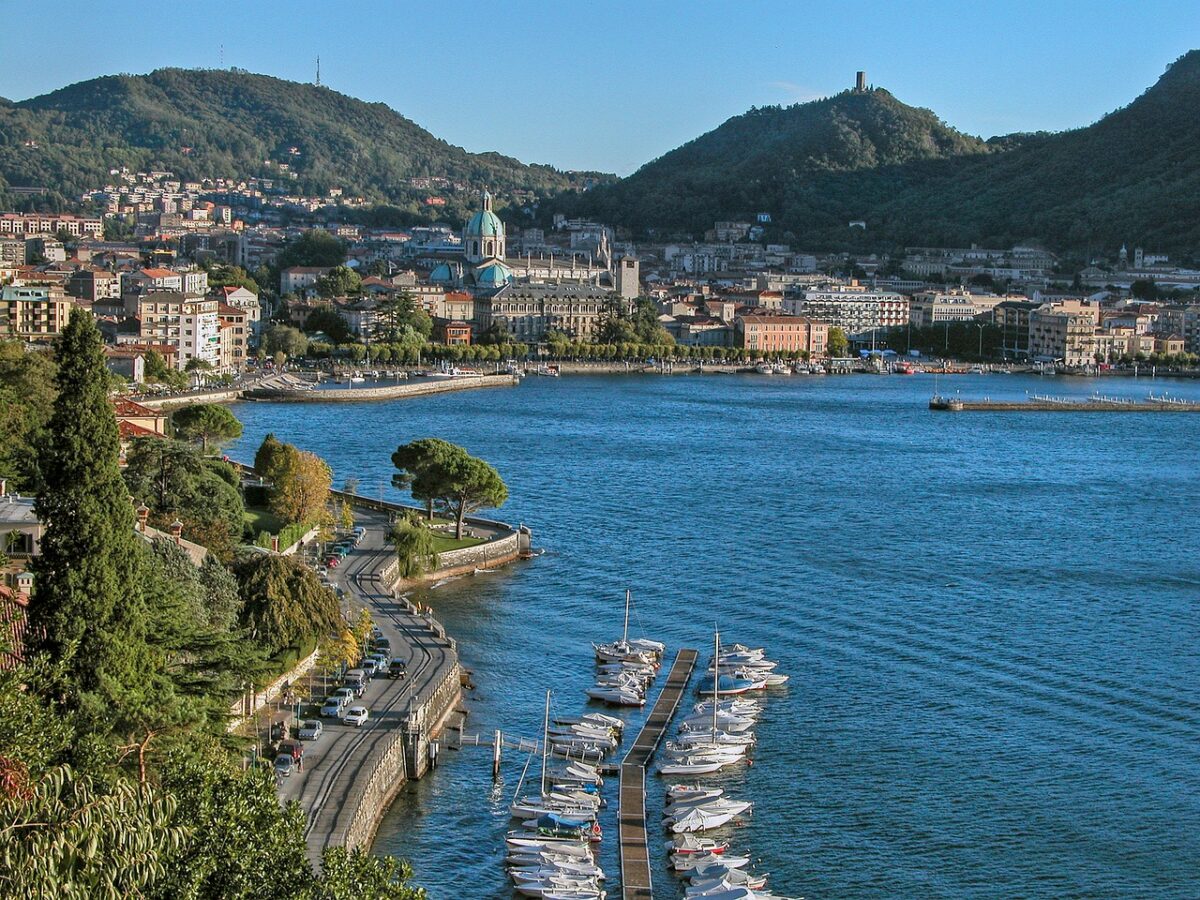
Take the bus line C10 from Menaggio to Como. Get off at the bus station in piazza Matteotti. Como’s centre, located inside the antique medieval walls, is rich in monuments and artworks. In the piazza del Duomo (cathedral) you find the Broletto, the antique town hall built in 1200 and the town’s bell tower. The Duomo was built between the end of 1300 and the mid 1700’s and is a fusion of different architectural styles. The façade statues are astonishing. Behind the Duomo is the ex Casa del Fascio masterpiece of the rationalist architect Giuseppe Terragni considered the symbol of modern architecture. Como also hosts real gems of the Romanesque period such as the church of S. Fedele. Near the lake stands the neoclassic Voltiano temple erected in 1927 for the centennial of the death of Alessandro Volta, the inventor of the battery, born in Como. Follow the itinerary through the Como’s historic center. We recommend the walk from Piazza Cavour to the gardens of Villa Olmo in order to admire the beautiful neoclassical villas on the lake shore. A ride with the funicular from Como to Brunate gives you an extraordinary view of the town. From Como it is possible to do a one hour boat trip around the first basin of the lake and admire the villas and noble palaces woven in the wonderful landscape. There is a boat every half an hour that leaves Como and touches Tavernola, Cernobbio, Moltrasio, and Torno. By purchasing a day pass you can complete the entire journey in about one hour, staying on board or hop off at the intermediate stops to visit the villages on this part of Lake Como. Back by bus or hydrofoil to Menaggio.
Saturday: Discover the centre Lake Area
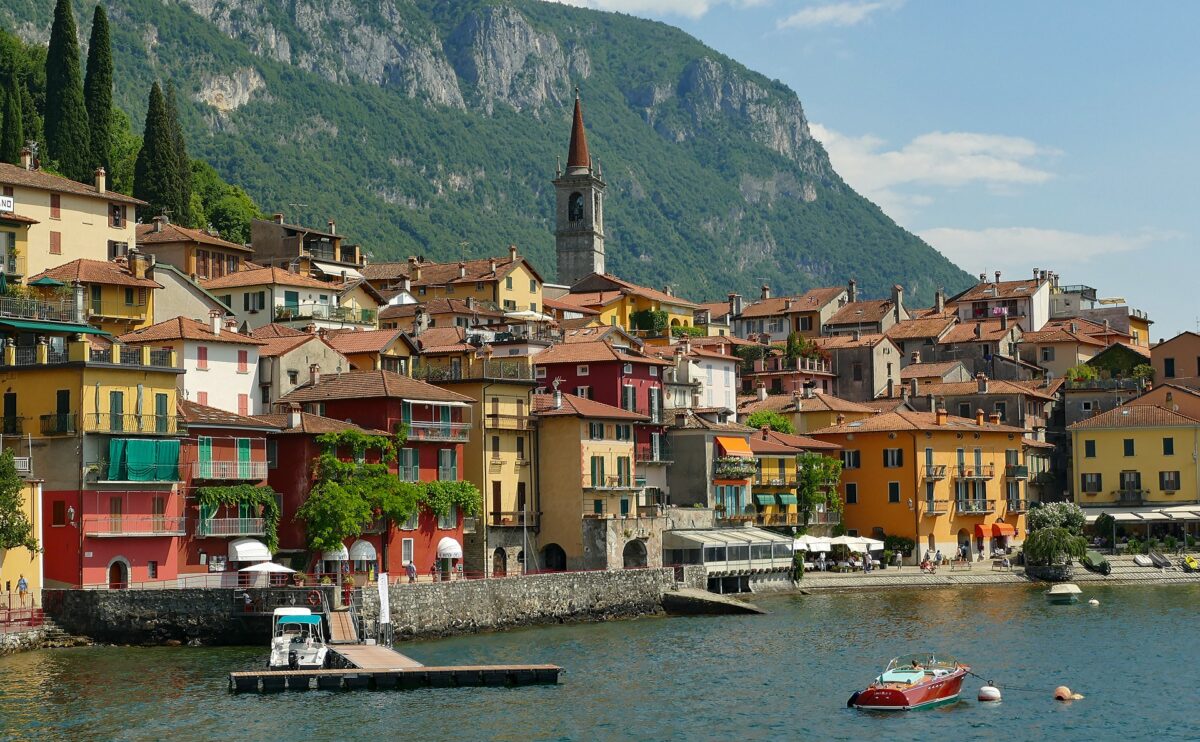
Take the ferry to Varenna with its colorful houses dominated by the castle of Vezio. From the ferry dock follow the splendid “Lovers Lane” to the historic centre with its narrow cobble stone streets. In the heart of the town is the mediaeval church of San Giorgio. The gardens and museum of Villa Monastero. and also the garden of the close by Villa Cipressi with its splendid terraced garden are worth a visit.
Then take the ferry across to Bellagio, situated at the extreme tip of a promontory that divides the lake into two branches. At the tourist office in Piazza Mazzini ask for the leaflet with the historic itinerary around Bellagio and two interesting walks to its outlying hamlets. Back by ferry to Menaggio.
Sunday: Lake side walk between Cremia and Musso
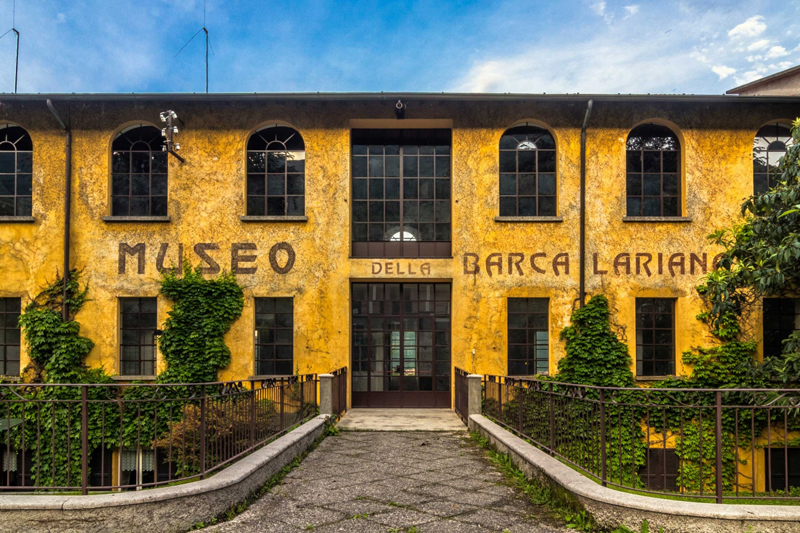
Cremia can be reached with bus line C10 from Menaggio. Get off the bus at bus stop S. Vito
If you are travelling by car you can park at the parking space above the Restaurant La Baia at the hamlet S. Vito.
From the bus stop head towards the Romanesque church of S. Vito, characterized by two bell towers. From here walk down to the lake and enter the lake side walk.
You skirt some small beaches from where you can enjoy a marvellous view of Monte Legnone, the highest peak of the lake (2610 m) on the other side of the lake.
At Pianello del Lario you pass close to the sixteenth century parish church of San Martino which is linked to the history of Don Guanello. It is here that the Saint worked as a parish administrator between 1881 and 1890. The presbytery of the church was frescoed by Isidoro Bianchi.
In the area of Pianello del Lario called Calozzo there is the Lariana Boat Museum (tel. +39 0344 87235). It is located in the premises of an old spinning mill; fishing boats, transport boats, as well as historical examples of the 20th-century motorboat industry are on display.
Just past the pier of Musso, you reach the old harbour with the characteristic fishermen’s houses. Slightly beyond the harbour the lake side path ends.
From the public boat dock, go up the steep ramp that leads to the state road. The village of Musso is situated at the foot of an imposing rocky spur called Sasso di Musso. Here in 1522 Gian Giacomo Medici known as “Il Medeghino” built a castle and exercised his violent power for almost a decade on most of the lake. Along the state road you can reach the Civic Museum (tel. +39 0344 82162), which features the main activities of the village over the centuries: marble quarries, silkworm breeding and related activities (there were eight spinning mills in Musso). Musso is connected with the C10 bus line.

